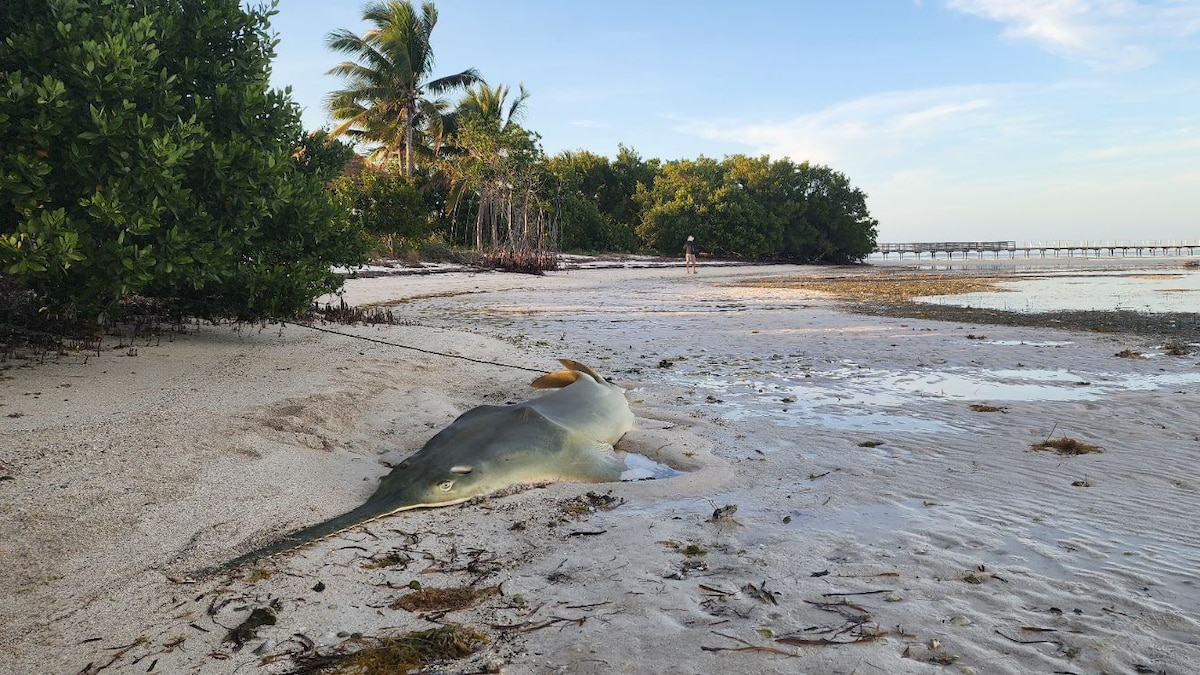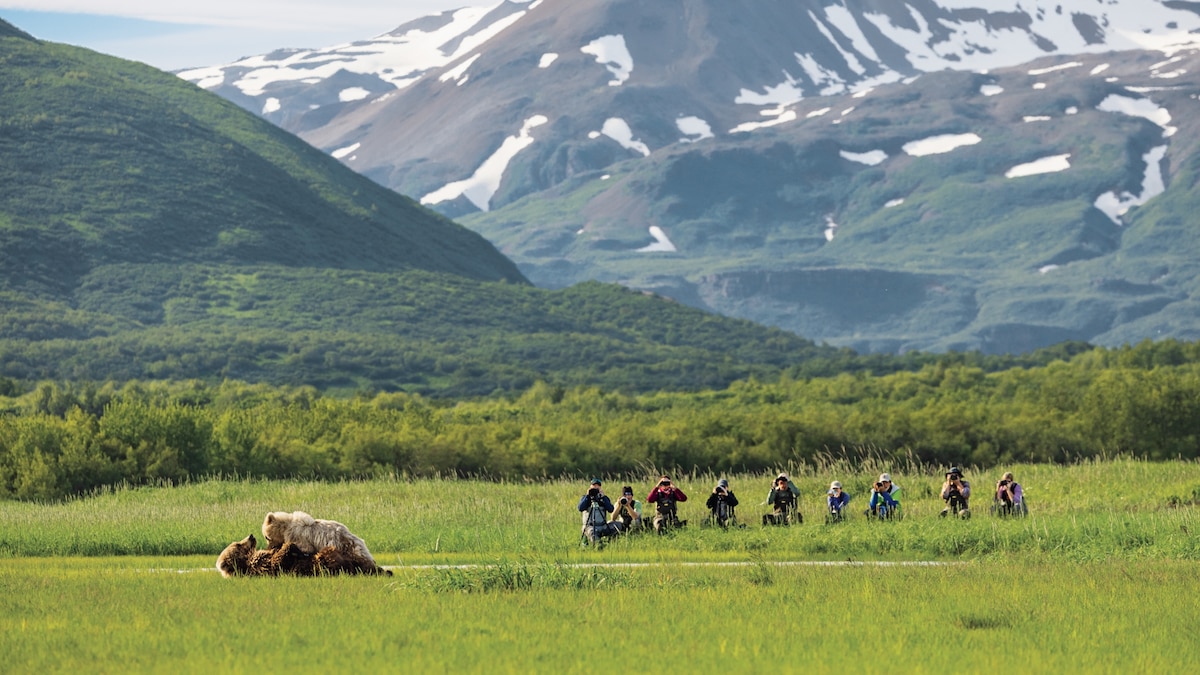Now Reading: Fish are spinning to death in the Florida Keys—again. Why is history repeating?
-
01
Fish are spinning to death in the Florida Keys—again. Why is history repeating?
Fish are spinning to death in the Florida Keys—again. Why is history repeating?

A bizarre fish behavior has resurfaced in the Florida Keys, and scientists are working diligently to uncover the cause and its potential long-term effects.
In fall 2023, fish and rays were seen spinning in circles and swimming erratically. Critically endangered smalltooth sawfish would thrash back and forth and began washing up dead on beaches. The unusual phenomenon affected over 80 species, including snapper, bull sharks, and goliath grouper. The event alarmed scientists and conservationists, particularly with sawfish dying in unprecedented numbers. By April 2024, the behavior seemed to subside, but questions remained.
After extensive testing of water and fish samples, researchers determined that the affected fish likely died from exposure to multiple toxins produced by various species of dinoflagellates—a type of microscopic algae. “Last year, we had some great evidence that increased abundance of these harmful algaes was in the same locations where fish were spinning,” says Thomas Matthews, program administrator with Florida’s Fish and Wildlife Research Institute.
Now, fish are spinning again, though in smaller numbers and happening in a much smaller geographic area, according to the Florida Fish and Wildlife Conservation Commission (FWC). One question is whether these fish are experiencing new symptoms or if they’re still suffering from last year’s exposure. What’s perplexing is that algae levels in the water are relatively low, unlike during the 2023-2024 event, says Matthews.
Since December 2024, FWC has received 44 reports of fish exhibiting spinning behavior, adding to more than 500 related reports since December 2023. Among these new reports, 22 have involved sawfish, including six confirmed deaths, with another likely occurring on March 20, according to Matthews. “There’s a sawfish 200 yards from me on the shoreline right now that we’ve got a team taking blood from to figure out what’s going on,” he said. “It’s so sad, these are amazing animals.”
(Here’s how scientists are trying to save the last sawfish stronghold.)
What we know about the toxins
Mike Parsons, a researcher from Florida Gulf Coast University, has been regularly sampling water for algae species suspected to be behind the toxins. One algae genus, Gambierdiscus, has been flagged as a possible toxin source, though the exact species hasn’t been identified and doesn’t match known species.
To definitively link the Gambierdiscus species to the events, scientists are working to identify the chemical makeup of the toxin, or toxins, at play too. “You can’t see it in the water, so it’s a lot harder for us to track it down,” Matthews says, meaning they need to collect samples when the fish are still actively spinning. Researchers have found Gambierdiscus algae on the gills of the fish, and water and fish tissue tests found evidence of neurotoxins. “We just really want to connect that smoking gun,” says Matthews.

Goliath groupers, which can live up to 50 years, are one of the species observed spinning in odd circles in the Florida Keys during the 2023-2024 event.
Photograph By David Doubilet, Nat Geo Image collection
While little is known about the ecology of the unknown Gamberdiscus organism, whatever toxin or group of toxins it produces appears to attack the myelin sheaths that surround and protect nerve cells in fish (and humans). This disrupts normal nerve signals. “Think of it as the plastic coating on a wire,” Matthews explains. “When that coating breaks down, the wire no longer works.” This damage can lead to abnormal behavior, such as spinning or thrashing.
Are spinning events the new normal?
What caused the algae to increase is really hard to figure out, says Ross Boucek, Florida Keys initiative director with the Bonefish and Tarpon Trust. But a heat wave that struck the region just before the fish began spinning in 2023 and caused unprecedented die-offs in the region may have been the trigger. “We have some studies that will help elucidate this, but I firmly believe it was the combination of the local stresses we put on our environment coupled with the heat wave we had,” he says.
Higher temperatures have been linked to harmful algal blooms in the past, and as heatwaves become more frequent, researchers are working to understand when and why the algae species may increase again.
As scientists continue to investigate the toxic algae and what to do to plan for future events, the good news is that it hasn’t seemed to impact the fishing industry and it is not a human health hazard. “It’s still good that seafood risks don’t seem to exist,” adds Bourcek. “That would have been a really backbreaker for the Keys economy.”
For now, Matthews stresses that “calls from the public to our fish kill hotline are incredibly important. That’s what guides our ability to go and investigate this event.”
The spinning events have drawn attention to the broader need to protect sawfish in the area. “Man this is one of the coolest things we have in Florida,” says Boucek. “How lucky are we to have this giant marine species with a huge saw on its face. We can’t lose that. So, we’ve got to figure it out.”

























